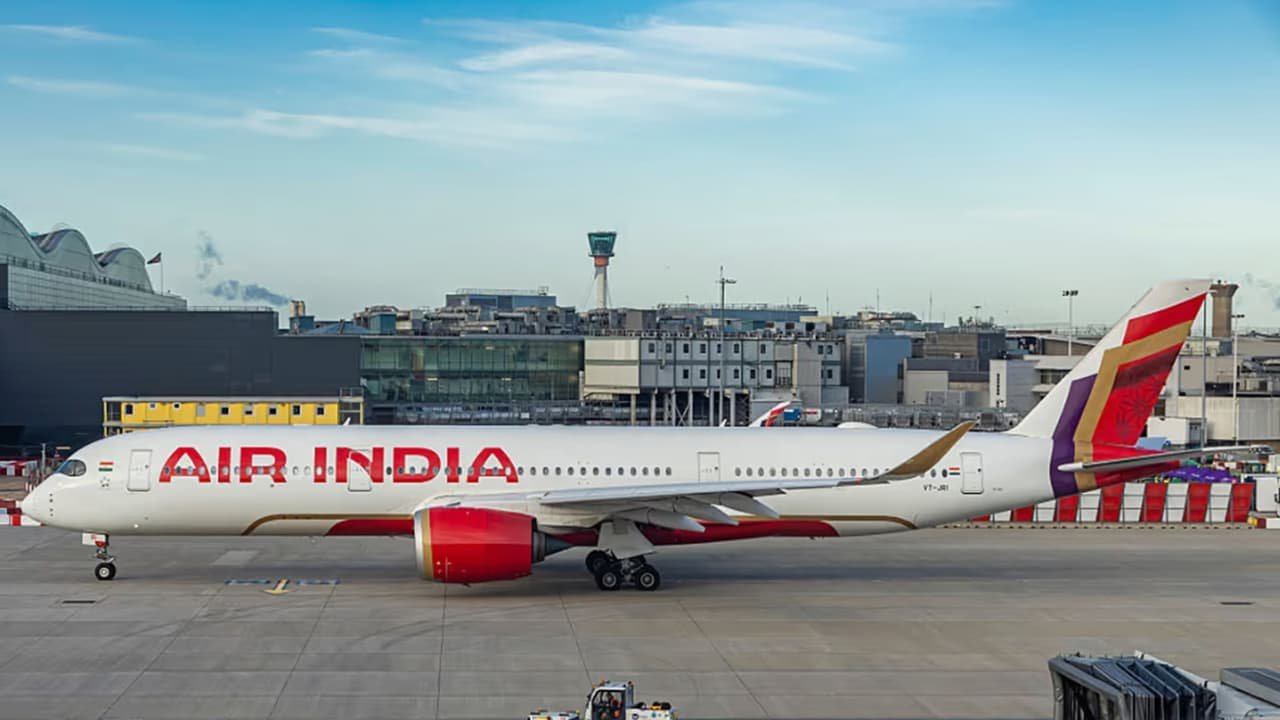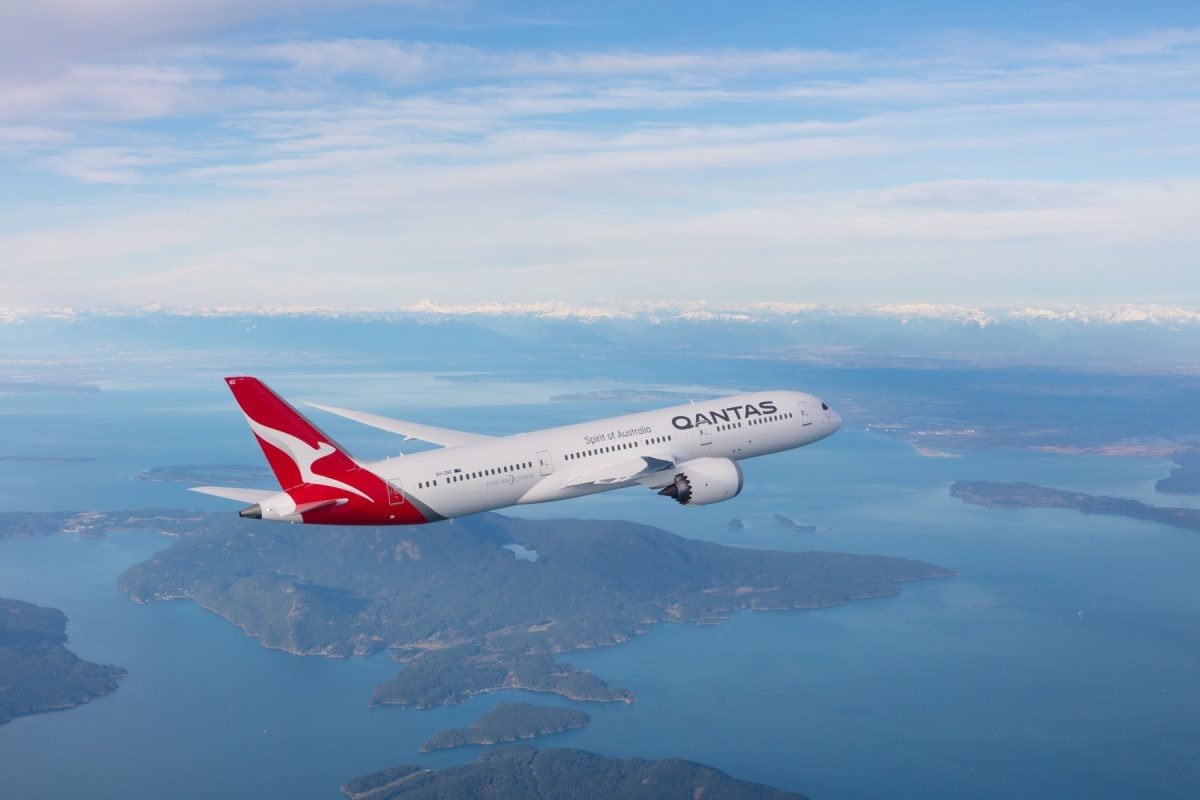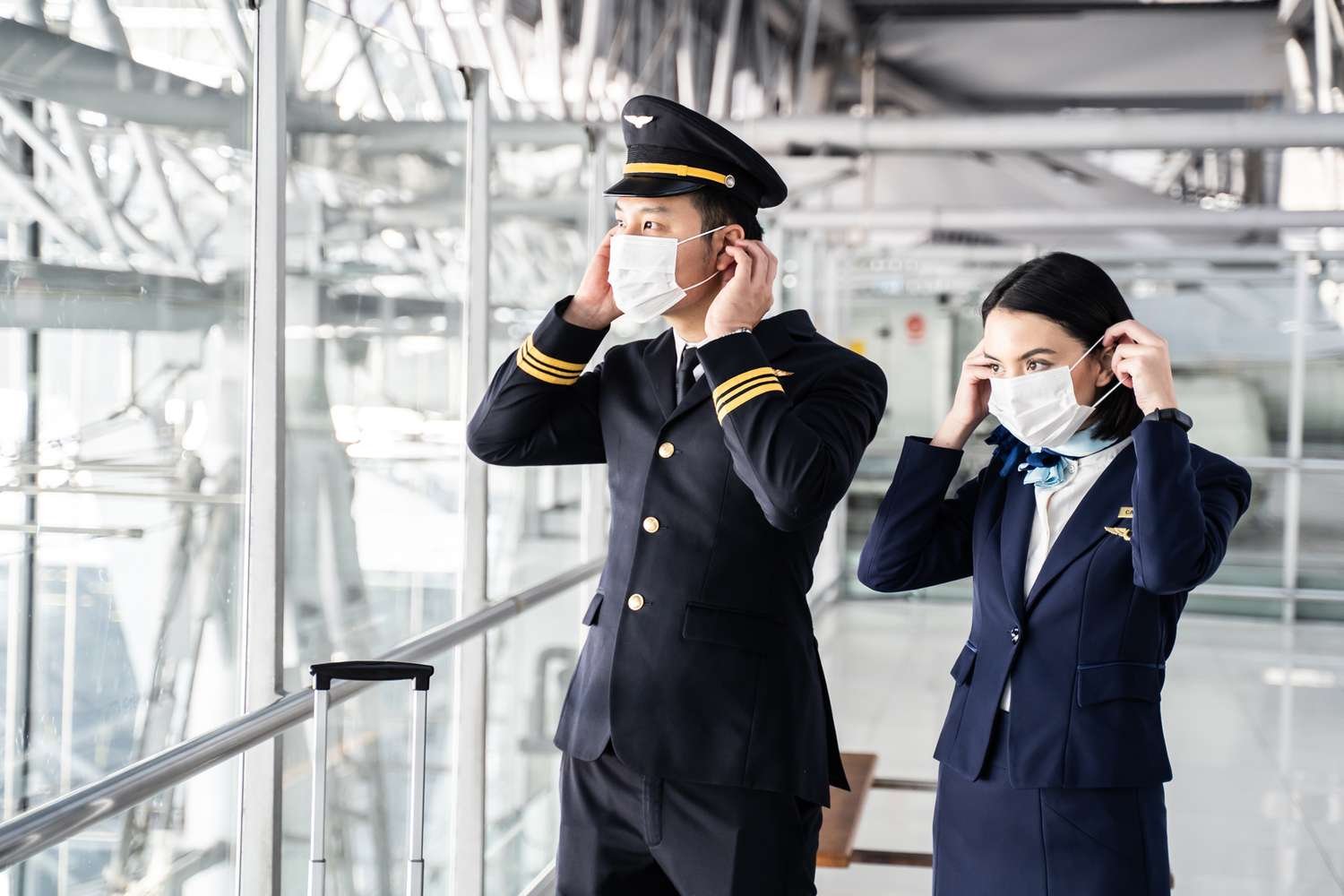Flight Buzz
Flights Delayed at Mumbai Airport After Network Outage, Air India Issues Travel Advisory

Air India has warned of possible delays at Mumbai airport after a network outage disrupted check-in systems, while heavy rain delayed over 300 flights in Delhi. The airline also raised its pilot retirement age to 65 years.
Air India on Saturday warned passengers about possible delays at Mumbai’s Chhatrapati Shivaji Maharaj International Airport after a third-party data network outage disrupted check-in systems. The issue affected departures for several airlines, including Air India. The outage has now been resolved, but the airline said some flights may still be delayed as operations return to normal. Passengers have been advised to check flight statuses before travelling to the airport. The disruption came during the busy Raksha Bandhan weekend, when passenger traffic is higher than usual.
Scroll to load tweet…
Heavy rainfall delays flights at Delhi airport
Meanwhile, at Delhi’s Indira Gandhi International Airport, more than 300 flights were delayed on Saturday because of heavy rain. According to officials, there were no diversions, but some cancellations occurred. Delhi airport handles about 1,300 flights a day, and Flightradar24 data showed average departure delays of 17 minutes.
Air India raises pilot retirement age
In another development, Air India has increased the retirement age for its pilots from 58 to 65 years and for non-flying staff from 58 to 60 years. The change was announced by CEO and MD Campbell Wilson during a town hall meeting. The decision brings Air India in line with retirement norms at the former Vistara airline, which merged with Air India in November 2024. Many pilots already had their service extended to 65 years, as allowed by India’s aviation regulator, DGCA.
Air India employs about 24,000 people, including 3,600 pilots and 9,500 cabin crew members. It is still unclear whether the retirement age for cabin crew will also change.
Flight Buzz
Japan Airlines Cancels More Than a Dozen Flights on Routes Including Miyazaki, Tokushima, Kochi, Niigata, Osaka, Tokyo, and More Due to Bad Weather, Disrupting Travel

Published on
August 10, 2025 |
Japan Airlines canceled more than a dozen domestic flights and delayed nearly half of its scheduled services as severe weather disrupted travel across Japan, affecting key routes including Miyazaki, Tokushima, Kochi, Niigata, Osaka, and Tokyo. Strong winds, heavy rain, and poor visibility caused by a passing low-pressure system forced the airline to halt operations on certain routes and delay hundreds of others, leaving thousands of passengers facing schedule changes, missed connections, and extended waits at airports nationwide.
The airline confirmed that 11 flights were canceled outright and 385 others — nearly half of its planned domestic operations — faced delays due to bad weather. Conditions included strong winds, heavy rainfall, and poor visibility at several regional and major airports.
The widespread disruption affected both regional connections and major trunk routes, creating a chain reaction that impacted flight schedules, aircraft rotations, and crew assignments across JAL’s network.
Routes and Flights Affected
While delays were widespread, the worst of the disruption was concentrated on routes linking smaller regional airports to major cities. The list of canceled flights included services between:
- Miyazaki and Fukuoka — JAL3634, scheduled for Sunday at 17:09 JST.
- Fukuoka and Tokushima — JAL3567 at 18:35 JST.
- Kochi and Fukuoka — JAL3588 at 18:44 JST.
- Fukuoka and Osaka (Itami) — JAL2060 at 19:05 JST.
- Fukuoka and Miyazaki — JAL3639 at 19:22 JST.
- Niigata and Osaka (Itami) — JAL2250 at 19:25 JST.
- Tokyo (Haneda) and Fukuoka — JAL335 at 19:45 JST.
- Osaka (Itami) and Tokyo (Haneda) — JAL134 at 19:45 JST.
- Osaka (Itami) and Fukuoka — JAL2061 at 20:05 JST.
- Tokushima and Fukuoka — JAL3568 at 20:15 JST.
- Fukuoka and Tokyo (Haneda) — JAL304, scheduled for Monday morning at 08:25 JST.
Many other flights on these and nearby routes operated but departed late, in some cases more than an hour behind schedule.
Cause of the Disruption
Meteorological reports indicated that a strong low-pressure system moving across western and central Japan brought heavy rain, gusty winds, and low cloud cover. These conditions made safe landings and take-offs difficult at certain airports, particularly in Kyushu and Shikoku, forcing flight crews to hold, divert, or cancel services.
Weather forecasters warned that unstable conditions would continue through parts of Monday, especially in coastal areas, which could prolong the disruption.
Passenger Impact
For passengers, the impact was immediate and frustrating. Many found themselves waiting for updates in crowded terminals, while others had to arrange alternative transport. At Fukuoka Airport, announcements about cancellations came in rapid succession on Sunday evening, leading to long lines at ticket counters.
Travelers with connections through Tokyo, Osaka, and other major hubs were among the hardest hit. Some missed onward flights to Hokkaido or Okinawa, while others lost valuable time for business or personal engagements.
Japan Airlines advised passengers to check its website and mobile app for real-time updates and to consider rebooking if their flights were flexible. The airline also reminded customers that weather-related delays and cancellations are beyond its control, but that it was making every effort to accommodate affected travelers.
Operational Strain on the Airline
Flight disruptions of this scale can create operational headaches beyond the day itself. Aircraft and crew are positioned according to a precise schedule, and sudden cancellations can cause planes to be out of place for subsequent flights.
For example, an evening cancellation from a regional city to Tokyo might mean a missing aircraft for an early morning departure from Tokyo to another destination. Crews also have maximum duty limits, meaning a delayed evening flight could push pilots or cabin crew beyond their legal working hours, resulting in further cancellations or substitutions.
Japan Airlines, which operates both short regional hops and long domestic routes with larger jets like the Boeing 787 and Airbus A350, often relies on tight turnaround times at airports. Bad weather can stretch those turnarounds and disrupt entire rotations.
Context and Past Incidents
Weather-related disruptions are not uncommon for Japan Airlines, especially during typhoon season and in winter months when snow can close northern airports. However, mass delays of this scale in early August are less frequent, often tied to seasonal storms or unusual weather systems.
In past years, similar low-pressure systems have triggered chain disruptions, prompting the airline to add extra recovery flights where possible. This time, with a high volume of weekend travelers, the cancellations had a bigger impact on passenger numbers.
Advice for Travelers
With forecasts predicting ongoing instability in the weather, passengers flying into or out of Japan’s western and central regions are advised to monitor conditions closely. Japan Airlines has set up a dedicated page for weather-related advisories and has urged travelers to sign up for flight alerts.
For those already at airports, staff are assisting with rebooking, overnight arrangements, and alternative routes — though options remain limited during peak travel periods.
Japan Airlines canceled more than a dozen flights and delayed hundreds more after strong winds, heavy rain, and poor visibility from a low-pressure system disrupted routes linking cities such as Miyazaki, Tokushima, Kochi, Niigata, Osaka, and Tokyo.
Looking Ahead
If weather conditions improve, the airline expects operations to stabilize by late Monday or Tuesday morning. However, some knock-on delays may persist into the week as crews and aircraft are repositioned.
Japan Airlines reiterated its apology to customers for the inconvenience caused and stressed that safety remains its top priority.
Flight Buzz
Qantas Cancels its Flights Across Australia- Sydney Stands Together With Melbourne, Brisbane, Adelaide, Perth Among The Affected Cities: Here’s Last Minute Update You Need To Know

Published on
August 10, 2025 |
Qantas Airways has announced the cancellation of several flights, impacting key domestic routes and major Australian cities. The affected destinations include Sydney (SYD), Melbourne (MEL), Brisbane (BNE), Perth (PER), and Adelaide (ADL), where 20 flights were cancelled for August 10,11 and 12, 2025. These cancellations are expected to disrupt travel plans for both domestic and international passengers, particularly during peak travel periods.
The cancellations have raised concerns among travelers and tourism operators, as these cities are popular tourist destinations. The disruptions may affect holiday plans, business travel, and tourism activities, leading to potential economic impacts in the affected regions.
The reason for the cancellation is still not known. However, according to the Bureau of Meteorology‘s forecast, adverse weather conditions may contribute to operational challenges for airlines with airports and air traffic controllers facing difficulties due to reduced visibility, unsafe runway conditions, and disruptions to flight schedules.
Affected Airports and Routes
The following airports and routes are directly impacted by the cancellations, as per Flight Aware:
- Sydney Kingsford Smith Airport (SYD): Flights to and from Melbourne, Brisbane, and Perth have been canceled.
- Melbourne Tullamarine Airport (MEL): Services to Sydney, Brisbane, and Adelaide are among the affected routes.
- Brisbane Airport (BNE): Cancellations include flights to Sydney, Melbourne, and Adelaide.
- Perth Airport (PER): Affected routes include services to Sydney, Melbourne, and Brisbane.
- Adelaide Airport (ADL): Flights to Sydney, Melbourne, and Brisbane have been canceled.
Passengers scheduled to travel on these routes are advised to check with Qantas for the latest updates on flight statuses and to explore alternative travel options if necessary.
Impact on Tourism and Local Economies
The recent flight cancellations are poised to significantly disrupt tourism and local economies in the affected Australian cities. Sydney, Melbourne, Brisbane, Perth, and Adelaide are key tourism hubs, drawing millions of domestic and international visitors annually for leisure, business, and cultural experiences. These cities offer a wide range of attractions, including iconic landmarks, festivals, conferences, and corporate events, all of which rely on smooth transportation networks.
Disruptions to flight schedules are likely to result in missed connections, delayed arrivals, and canceled tours or events, leading to a direct impact on tourism businesses. Hotels, tour operators, and local attractions in these cities could experience a drop in bookings, cancellations, and reduced foot traffic, affecting their overall revenue.
Business travelers may also face challenges attending important meetings, conferences, or professional engagements, which could further disrupt economic activities. The delays and cancellations could lead to a ripple effect, reducing productivity and causing setbacks for local industries that depend on seamless travel for both tourism and commerce.
Passenger Advice and Alternative Arrangements
Qantas is actively working to assist affected passengers following the recent flight cancellations by rebooking them on available alternative flights wherever possible. The airline is prioritizing rebooking on the next available services to minimize disruptions to passengers’ travel plans. Passengers impacted by the cancellations are strongly encouraged to visit the official Qantas website, where they can access real-time updates on flight statuses, alternative options, and rebooking procedures. The website also provides a dedicated customer service section, where passengers can request personalized assistance and explore available solutions. For those unable to rebook on alternative Qantas flights, the airline is advising passengers to contact customer service for further guidance on possible compensation or refund options, including details on how to request a refund for canceled services.
However, for those unable to secure alternative flights, exploring other modes of transportation, such as trains or buses, may be viable options, depending on the distance and urgency of travel. The airline also recommends checking any potential travel restrictions or additional requirements that might apply to alternative routes or services.
For the Travelers
The recent flight cancellations by Qantas Airways have disrupted travel plans for many passengers across Australia, affecting tourism and local economies in key cities. Travelers are adviced to keep a close eye on flight updates and take steps to minimize the impact of these disruptions.
Image Credit: Qantas Airways
Flight Buzz
What Happens When a Pilot Gets Sick or Dies Mid-flight?

- Commercial airlines take precautions to keep passengers safe and avoid in-flight emergencies.
- Pilots must pass strict health checks and assess themselves before every flight to ensure they’re fit to fly.
- If a pilot gets sick mid-flight, the other pilot takes full control, and medical support can be coordinated remotely.
Commercial pilots may fly 900,000-pound jumbo jets with hundreds of passengers on board, but that doesn’t make them superhuman. Like us, they have immune systems that sometimes falter. While it’s uncommon for pilots to get sick or hurt on the job, it’s not unheard of. And rarely, they pass away mid-flight. Just last year, a Turkish Airlines flight from Seattle to Istanbul was forced to make an emergency landing in New York when its 59-year-old pilot collapsed and died a few hours into the 12-hour flight. Thankfully, these unfortunate incidents seldom lead to accidents or even situations that affect passengers—here’s what happens when a pilot gets sick mid-flight.
Preventative Measures
It’s important to note that most sick pilots never make it onto the flight in the first place. “This is because we assess our ‘Fitness to Fly’ prior to each flight,” explains Adam Cohen, a captain at SkyWest Airlines. While it’s not a comprehensive guide, the FAA’s pre-flight health checklist for pilots is called the IMSAFE Checklist. The letters stand for illness, medication, stress, alcohol, fatigue, and emotion. If a pilot doesn’t feel 100 percent in any category, or they’ve been impacted by medication or alcohol consumption, they should refrain from flying and notify their doctor.
Furthermore, in order to fly commercial planes carrying more than six passengers, all pilots need a medical certificate, issued by an official Aviation Medical Examiner. This certificate ensures they’re physically and mentally healthy, and it’s only good for 6-12 months, depending on the pilot’s age. Pilots must be seen by a doctor regularly, and they can’t be morbidly obese or have substance abuse issues.
What Happens If a Pilot Gets Sick Mid-flight
Despite the FAA and airlines’ best efforts to ensure commercial pilots are healthy—they even feed them different meals to prevent the entire flight deck from suffering from food poisoning—pilots occasionally fall ill during a flight they’re working. However, this doesn’t necessarily mean it’s a mayday situation. “If a pilot becomes sick or incapacitated in flight, the other pilot is fully qualified to take over and safely operate the aircraft,” explains Rock Saddy, a pilot and liaison for Cirrus Aviation Services. “Commercial flights always have at least two trained pilots on the flight deck, and in some cases, particularly long-haul routes, a relief pilot may also be on board.”
In addition to keeping passengers comfortable, flight attendants are trained to assist in medical emergencies. And according to the Centers for Disease Control and Prevention (CDC), U.S. aircrafts with one or more flight attendants on board are required to have a U.S. Food and Drug Administration-approved automated external defibrillator on board as well as a first aid kit, plus an emergency medical kit containing certain medications you wouldn’t find in a first aid kit.
Saddy tells Travel + Leisure that many airlines also have 24/7 access to services such as MedLink that connect flight crews with emergency room doctors via phone, satellite, or radio. If the pilot is seriously ill, the trained doctor will instruct the pilot taking over to divert to the nearest appropriate airport so the sick pilot can receive medical attention.
Passenger Volunteers
Most frequent fliers can recall a time when they were on a flight and the crew asked passengers who were doctors or nurses to volunteer to assist in the event of a medical emergency. Because this happens rather frequently (although it’s most often a fellow passenger, not the pilot, who needs help), the Aviation Medical Assistance Act, which passed in 1998, includes a section that protects medical personnel from being sued for providing “good-faith” medical care in the event of an emergency.
However, this only applies to domestic flights within the U.S. It may not cover you on an international flight. And if you’ve been consuming alcohol, you could be liable for misconduct or negligence. Ultimately, whether or not you step forward to assist is up to you, so read up on the regulations before you travel.
-

 Brand Stories3 weeks ago
Brand Stories3 weeks agoBloom Hotels: A Modern Vision of Hospitality Redefining Travel
-

 Brand Stories2 weeks ago
Brand Stories2 weeks agoCheQin.ai sets a new standard for hotel booking with its AI capabilities: empowering travellers to bargain, choose the best, and book with clarity.
-

 Destinations & Things To Do3 weeks ago
Destinations & Things To Do3 weeks agoUntouched Destinations: Stunning Hidden Gems You Must Visit
-

 Destinations & Things To Do2 weeks ago
Destinations & Things To Do2 weeks agoThis Hidden Beach in India Glows at Night-But Only in One Secret Season
-

 AI in Travel3 weeks ago
AI in Travel3 weeks agoAI Travel Revolution: Must-Have Guide to the Best Experience
-

 Brand Stories1 month ago
Brand Stories1 month agoVoice AI Startup ElevenLabs Plans to Add Hubs Around the World
-

 Brand Stories4 weeks ago
Brand Stories4 weeks agoHow Elon Musk’s rogue Grok chatbot became a cautionary AI tale
-

 Brand Stories2 weeks ago
Brand Stories2 weeks agoContactless Hospitality: Why Remote Management Technology Is Key to Seamless Guest Experiences
-

 Asia Travel Pulse1 month ago
Asia Travel Pulse1 month agoLooking For Adventure In Asia? Here Are 7 Epic Destinations You Need To Experience At Least Once – Zee News
-

 AI in Travel1 month ago
AI in Travel1 month ago‘Will AI take my job?’ A trip to a Beijing fortune-telling bar to see what lies ahead | China



You must be logged in to post a comment Login